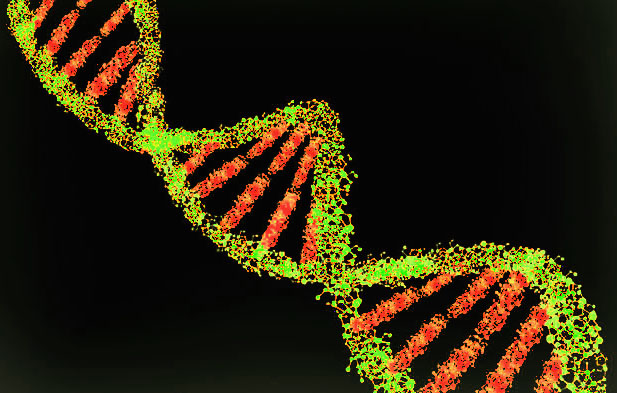 All lifeforms across the entirety of the planet Earth have one thing in common, in that there is only one genetic code shared amongst all of the biological kingdoms, a singular chemical language handed down through the planet’s history, from the earliest single-celled creatures to the complex organisms that inhabit the Earth today. But the fact that only one known genetic code is known to exist would appear to be an oddity, considering the diversity of lifeforms that have sprung from that singular code. However, an international team of researchers have published a study that shows that other combinations of atoms could be used to make up new genetic codes, opening the possibility that the language that makes up life throughout the universe might be more varied than we might imagine.
All lifeforms across the entirety of the planet Earth have one thing in common, in that there is only one genetic code shared amongst all of the biological kingdoms, a singular chemical language handed down through the planet’s history, from the earliest single-celled creatures to the complex organisms that inhabit the Earth today. But the fact that only one known genetic code is known to exist would appear to be an oddity, considering the diversity of lifeforms that have sprung from that singular code. However, an international team of researchers have published a study that shows that other combinations of atoms could be used to make up new genetic codes, opening the possibility that the language that makes up life throughout the universe might be more varied than we might imagine.
“It is truly exciting to consider the potential for alternate genetic systems… that these might possibly have emerged and evolved in different environments, perhaps even on other planets or moons within our solar system,” co-author Jay Goodwin, a chemist at Emory University, said in a statement.
Genetic encoding on Earth comes in the form of one of two types of large protein molecules, deoxyribonucleic acid or ribonucleic acid—more commonly known as DNA and RNA, respectively. These nucleic acids are essential to all known forms of life on Earth, where they create, encode and then store the information of every living cell of every organism. This chemically-encoded information is used to drive the functions of each individual cell, and in turn the functioning of the larger organism, if that cell is part of a multi-celled creature. Ultimately, this genetic information facilitates the reproduction the organism, copying the entirety of its complex genetic code onto its progeny.
But, unlike the myriad codes available across our various computer platforms, there is only one genetic code shared across the entirety of life on Earth, making it difficult for researchers to envision what life on other planets—indeed, life as we don’t know it—might look like.
Although a number of both natural and man-made molecules mimic the basic structure of DNA, no-one has studied how many possible codes could theoretically exist, and provide an illustration as to what researchers could look for when either searching for, or trying to write their own, alternate codes.
“There are two kinds of nucleic acids in biology,” according to study co-author Jim Cleaves, a chemist at the Tokyo Institute of Technology. “We wanted to know if there is one more to be found or even a million more. The answer is, there seem to be many, many more than was expected.”
The study authors designed a computer program that would generate chemical formulas for nucleic acid-like molecules, using combinations of molecules that would assemble in lines the same way nucleotides couple up in DNA strands. When all was said and done, the program had assembled more than 1,160,000 different molecules that met the study’s basic criteria.
“We were surprised by the outcome of this computation,” according to study co-author Markus Meringer, a chemist at the German Aerospace Center in Cologne. “It would be very difficult to estimate a priori that there are more than a million nucleic-acid like scaffolds. Now we know, and we can start looking into testing some of these in the lab.”
Provided the planet wasn’t genetically “seeded” early in its formation, as per Panspermia theory, these alternate genetic codes may offer some insight into how DNA and RNA evolved on Earth: as it stands, there are no apparent “primitive” forms of DNA or RNA that would offer some understanding of how such a complex chemical code would have come about in Earth’s early oceans, in the same way that the fossil record has recorded the evolution of micro-and-macroscopic organisms throughout Earth’s history. This lack of intermediate examples linking simpler organic molecules to complex nucleic acids makes it appear as if they simply sprung into existence, a prospect that mightn’t be acceptable to mainstream science.
Aside from helping xenobiologists recognize what may be truly alien lifeforms on other planets, these genetic look-alikes may also provide the basis for future medical advances: Drugs that resemble DNA and RNA are already used to combat dangerous viruses and malignant cancer cells in the human body; with a wider variety of codes to work with, this could open up drug designs that would expand medical science’s arsenal against deadly diseases.
“It is absolutely fascinating to think that by using modern computational techniques we might stumble upon new drugs when searching for alternative molecules to DNA and RNA that can store hereditary information,” explains study co-author Pieter Burger, a biochemist at Emory University.
Subscribers, to watch the subscriber version of the video, first log in then click on Dreamland Subscriber-Only Video Podcast link.